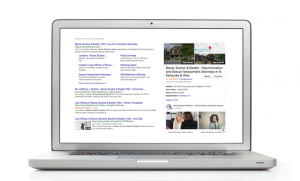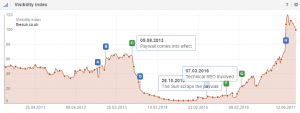by Tobi Elkin, Staff Writer @tobielkin, August 5, 2016
There’s a lot of talk about audience-based buying, selling, and targeting. Advertisers are looking for the right audiences, and audiences are considerably more complex than merely accounting for demographics and age. Audiences are comprised of people — and people have specific interests and passions, behaviors and preferences. We’re complex creatures.
Technology companies have thought up all sorts of algorithms and predictive tools to figure us out, mostly to better understand how we spend our time, and the things that motivate us to spend our money. These companies are busy collecting, synthesizing, and analyzing data on our online behaviors and habits. There’s a considerable amount of data on us. Facebook, in particular, has a lot of it.
A four-year-old company called clypd has a TV sales platform that delivers workflow automation and data-enhanced decisioning tools to media companies looking to manage their sales efforts.
Pete Doe, clypd’s chief research officer, said the company is moving away from the word “programmatic.” “Programmatic is problematic,” Doe said.
RTBlog has heard that idea from others as well. Indeed, programmatic has all sorts of connotations and is defined differently by most companies you talk to. When asked if clypd is focused on the evolution of programmatic TV, Doe said clypd is focused on programmatic within the context of linear TV. For clypd, programmatic simply means automating workflow as much as possible and introducing audience data into the process of buying linear TV beyond age and gender. That’s it. It’s about identifying “advanced audiences that go beyond age and gender,” he stressed.
While clypd is seeing a lot of deals with age and gender guarantees, it’s also seeing guarantees beyond that using Nielsen enhanced datasets, MRI Fusion data, Nielsen Catalina data, and other types. Doe said clypd’s platform enables media companies to work with all data sources. “We’re moving toward a more general capability where buyers can buy index-based data by day part” — and so forth.
While there’s “no perfect dataset” that can be used to identify and target audiences, “the key thing is, everyone wants to move beyond age and gender in media buying. It’s not a new idea. The missing piece is, can you activate the datasets and build a campaign with those advanced datasets, and have a financial guarantee around them between the buyer and the seller,” Doe explained. “The No. 1 challenge we see is defining your advanced target. The buyer has its own view about the ideal target.”
While programmatic buying has come to linear TV — it’s been a big part of upfront deals for Discovery, Viacom, Fox, and others — challenges remain in defining targets, Doe said.
For example, say an advertiser is looking for “international fliers.” What is an international flier? It’s more complex than women ages 25 to 54. What are the best datasets to use? Do you have the capability to go beyond one media owner to encompass several media owners? Those are just a few of the questions, according to Doe. Having worked at Nielsen for a dozen years, Doe is accustomed to creating advanced datasets and knows the challenges therein.
Recently, clypd introduced a private marketplace integrating its platform with partners’ platforms to help create proposals for agencies that include age and gender guarantees. The product layers in audience and yield optimization on top of traditional TV media sales strategies. It’s designed to aid media companies in their transactions with their agency and brand partners.
Discovery Communications, ESPN, and Fox Networks Group have been using the clypd platform to engage with their brand and agency partners on new opportunities that use data and workflow automation.
MediaPost.com: Search Marketing Daily
(88)




